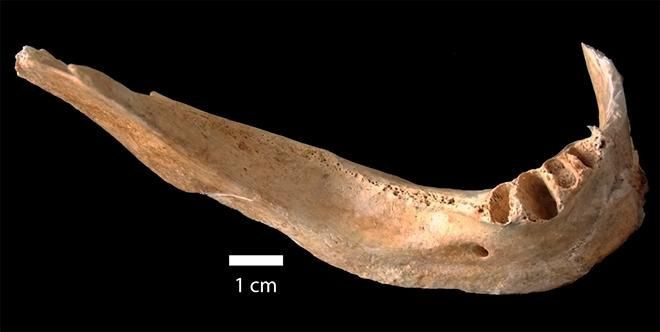Hiroshima Bombing: Bone Analysis Reveals Radiation Exposure Twice Fatal Level

The bombing of Hiroshima and Nagasaki in 1945, the only use of nuclear weaponry in the history of warfare, still sends shiver down the spine of humanity. Several thousand civilians died after being bathed with radiation from the detonation of "Little Boy" and “Fat Man” over the two cities.
The explosions prompted scientists across the globe to conduct detailed studies and gain insight into radiation and its effects. The work still continues, but just recently, a group of scientists in Brazil achieved a major breakthrough and discovered that a person standing a kilometer away from the epicenter of the bomb that exploded over Hiroshima was exposed to twice the amount of radiation that would prove fatal for a human body.
Studying the jaw-bone of a victim, scientists leveraged properties of paramagnetism or the situation in which bones become weakly magnetic due to the impact of X-rays and gamma rays. The phenomenon — first discovered by Sergio Mascarenhas, one of the authors of the work — served as a marker and allowed the researcher to date archaeological fossils by getting a rough estimate of the radiation absorbed by them.
Mascarenhas demonstrated that the phenomenon, which was seen in the bone of the unidentified victim, was good enough to obtain a dosimetric signal, but the precise estimate was ascertained when modern data analysis tools and a technique called electron spin resonance spectroscopy was brought into use.
As part of this method, researchers moved backward to measure the exact level of radiation exposure. They removed tiny pieces of the jaw bone and irradiated them to get to the original level of radiation in the bone.
"We added radiation to the material and measured the rise in the dosimetric signal," study co-author Oswaldo Baffa said in a statement. "We then constructed a curve and extrapolated from that the initial dose, when the signal was presumably zero. This calibration method enabled us to measure different samples, as each bone and each part of the same bone has a different sensitivity to radiation, depending on its composition."
The finding of the work revealed the bone in question had been exposed with a whopping 9.46 grays (Gy) or joules of radiation energy per kilogram. "About half that dose, or 5 Gy, is fatal if the entire body is exposed to it," Baffa explained. The researchers further added the value derived with their technique was comparable to that obtained from non-biological samples from the bomb site.
That said, the group believes this technique could be useful in determining who has been exposed to nuclear particles and is in need of treatment. "There were serious doubts about the feasibility of using this methodology to determine the radiation dose deposited in these samples, because of the processes involved in the episode," Angela Kinoshita, another author of the work, said in the statement. "The results confirm its feasibility and open up various possibilities for future research that may clarify details of the nuclear attack."
The study, titled “Electron spin resonance (ESR) dose measurement in the bone of Hiroshima A-bomb victim,” was published April 27 in the journal PLOS One.
© Copyright IBTimes 2024. All rights reserved.





















